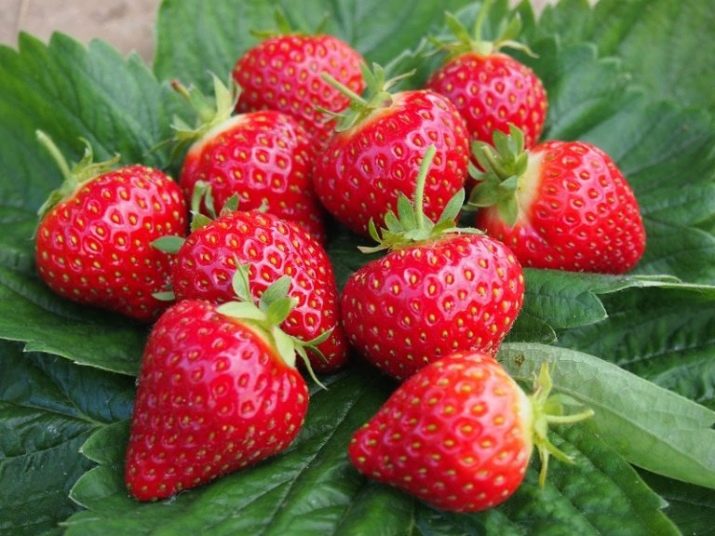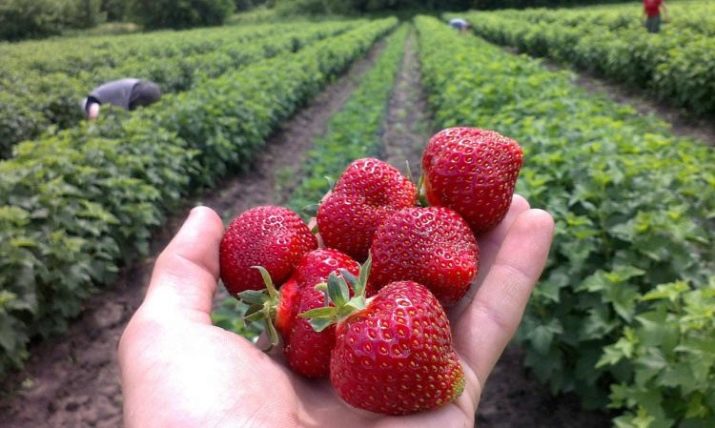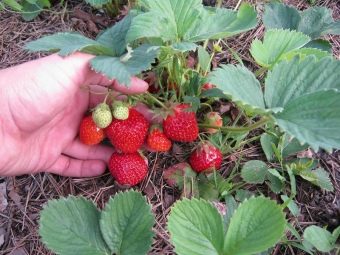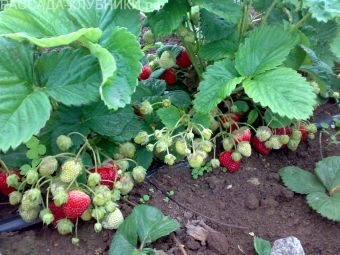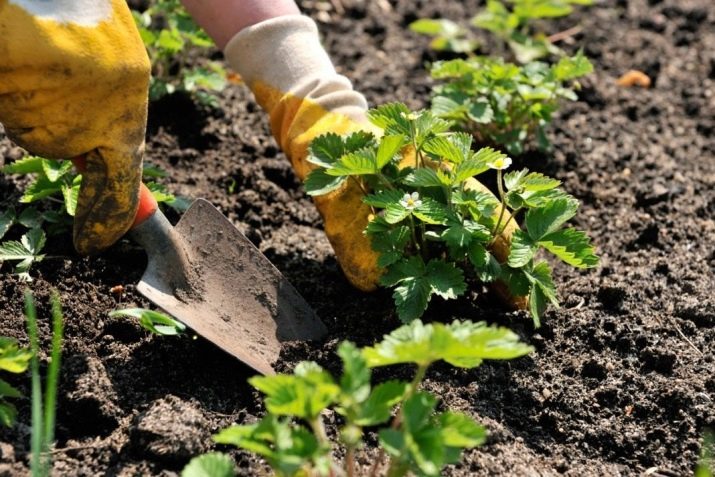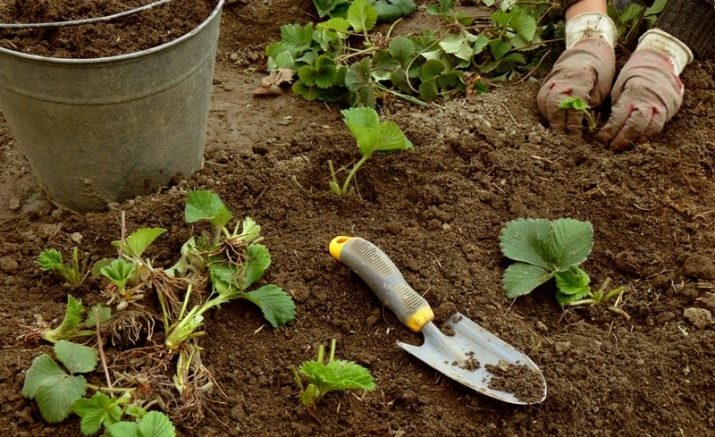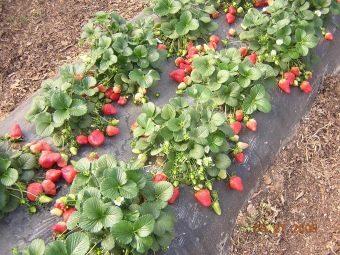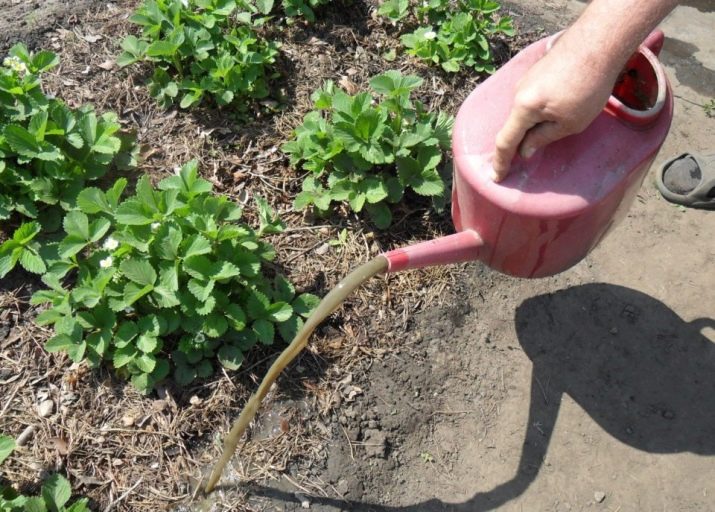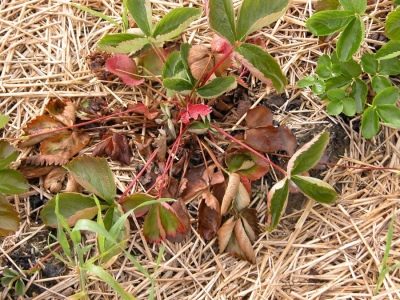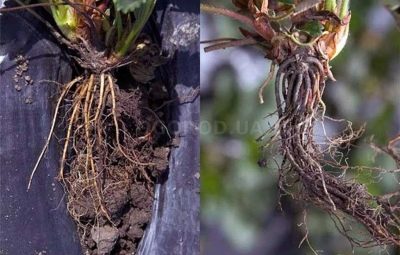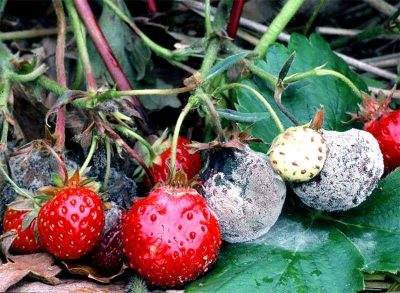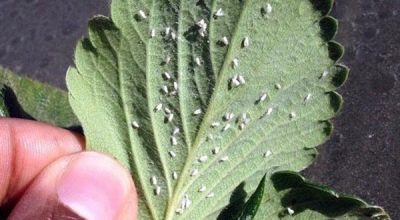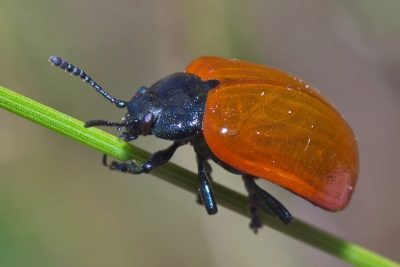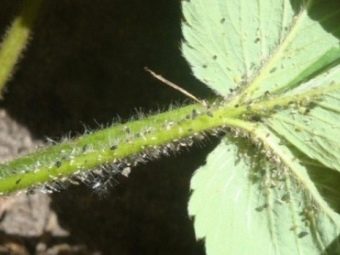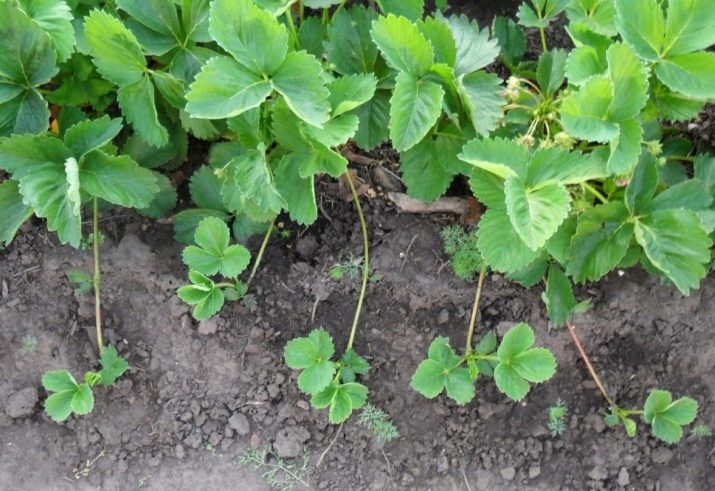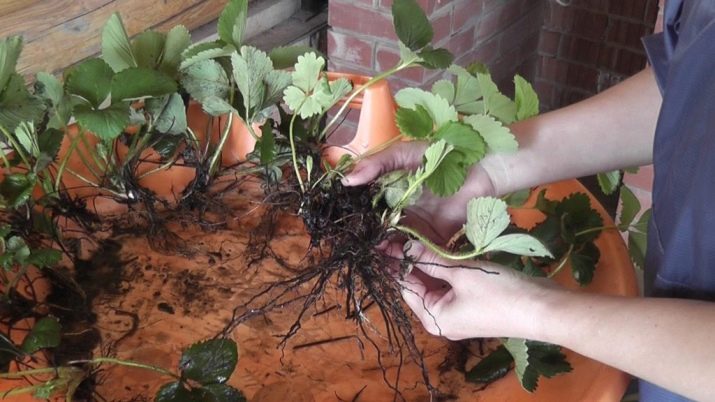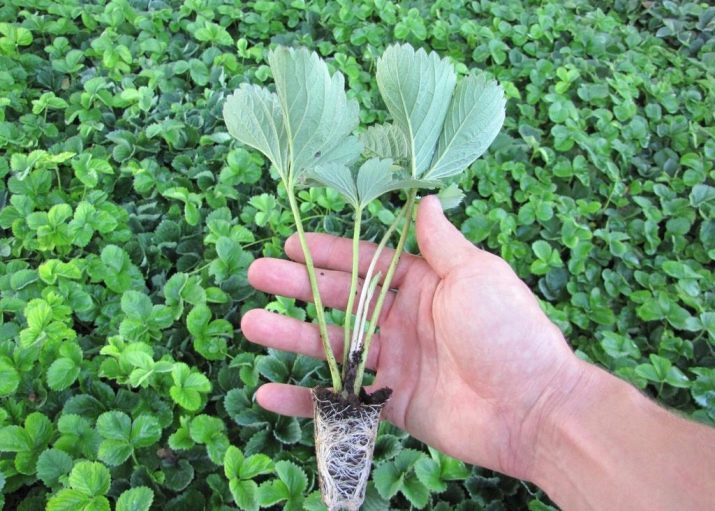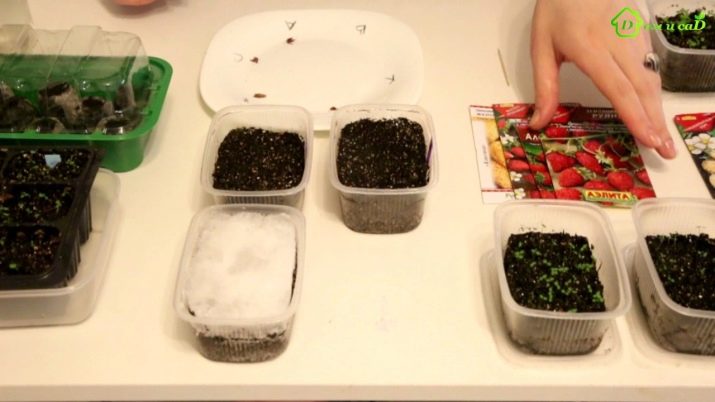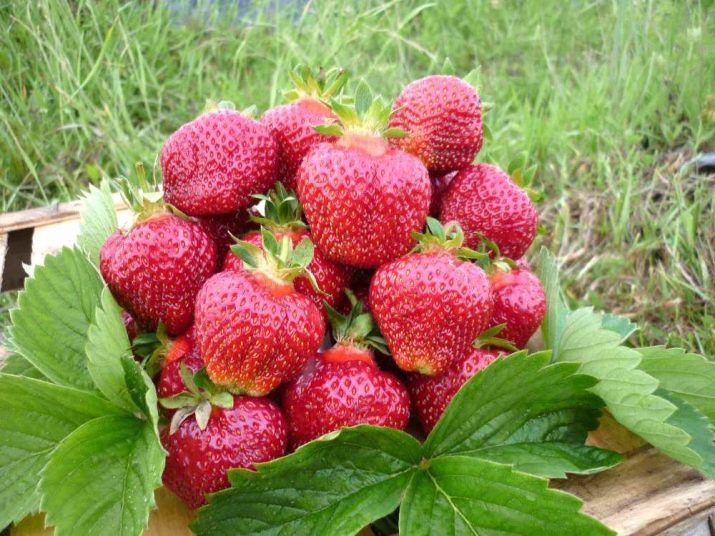Strawberry “Honey”: description and agricultural technology

Probably in the world there is no person who does not like strawberries.These juicy, fragrant, tasty and sweet berries do not leave indifferent either children or adults. Not everyone has the opportunity to grow it yourself, but if you're one of those lucky ones, you know how many different types of strawberries and strawberries are now. And how difficult it is sometimes to find the variety that will satisfy you with both fruitfulness, comparative simplicity, and other useful qualities. In our article we will talk about the strawberry variety "Honey" - one of the most popular types of this beautiful berry.
Origin and Regions
Garden strawberries "Honey" was obtained by the masters of the selection of the United States back in 1979 by hybrid crossing of Vibrant and Holiday varieties. It received its name from the town of Honeoye, which is located in the state of New York, next to which this species was obtained. Due to differences in transliteration, you can find other names for this variety - “Honeyo”, “Honeyoye”. From their "parents" this species inherited a high yield and large size of the berries. This variety can be called a proven time, since so far its popularity among gardeners, gardeners and summer residents has not decreased.
In Russia, the variety is best cultivated in open soil in the Central, Central Black Earth and North Caucasus regions, as it is quite resistant to frost. Included in the state budget commission in 2013
Characteristic variety
This type of strawberry is an early (or mid-early) strawberry. The period of fruiting is once a year: in open soil - at the end of spring (middle or second half of May); in greenhouses or in warm regions - from the second half of April, usually lasting for 2-3 weeks. Bushes are compact, strong. The rhizomes are well developed, and the flower stalks are strong.
The leaves of strawberries are dark green, large - up to 22 cm in length. Productivity, as noted earlier, is high: from 20-300 to 800 g per bush. The average weight of berries - 16-20 g, maximum - about 30 g. Fruit:
- regular conical shape with a neck;
- bright or dark red, glossy;
- with juicy, elastic red flesh, without hollowness;
- with wine-sweet taste, slightly sour and pleasant aroma;
- 2-3 days keep marketable.
Berries contain up to 67.6% of vitamin C, 5.7% of sugar and 0.87% of acid, due to which they have a high nutritional value and beneficial properties.
Landing
If you have purchased seedlings from the store, then they are best planted in the spring: in April and early May. This is done to ensure that during the hot season the bushes have got accustomed and grown strong, and next year they will please you with a good harvest.
It is better to plant your seedlings obtained from the strawberry mustache in the autumn season, about a month before the arrival of cold days. Bushes need time to take root in the ground, and when the air temperature drops below 5 degrees Celsius, the rhizomes of strawberries do not grow. It is recommended to plant strawberries in August and early September. But do not count on a great harvest in the coming season.
Carefully select a landing site, it must meet a number of requirements.
- Strawberries love open, well-lit places. Berries, well absorbed by the light of the sun, have a richer taste and aroma than growing in the shade. Orient the plantations from sunrise to sunset - for constant illumination and better warming of the earth with the rays of the sun.
- In the case of low-lying, poorly ventilated land, as well as when groundwater rises too close to the ground, it is recommended to make beds with bulk soil at a height of about 20 cm.
Follow the rules of crop rotation. Do not plant garden strawberries immediately after the nightshade, cucumbers, cabbage. But after the greens, crops of peas and various beans, radishes, it will grow very well. Do not plant this crop in the shade of fruit trees. Not only will she lack sunlight, there is also a high chance of getting toxic substances in the case of fungicidal treatment of trees.
Also, do not plant garden strawberries "Honey" next to the crimson or pink thickets. After all, the sweet berries will attract insect pests from these spines. It is more sensible to plant strawberries “Honey” at a distance of 25-30 cm from each other, and the width of the aisle should be about 60 cm to facilitate the care and identification of whiskers from different rows. Optimum bed width - 80 cm.
Leave about 5-8 cm of roots, cut too long. Straighten them when planting in the hole, then carefully pour the soil to the shoots of the bush.
Watch the root neck, it should not be exposed when watering and shrinkage of the soil.
Care
The grade "Honey" is rather pretentious to moisture content of the soil. Drainage and proper device beds help in solving this problem, but you need to properly water the bushes. In the initial week after planting, the plants should receive some water every day to accelerate engraftment and adaptation.
Then watered once in seven days, with about 10 liters per 1 square. m strawberry is enough. But we must take into account the weather: if it is hot and dry, watering increases up to 2-3 times a week. It is important not to overwhelm the soil with moisture: garden strawberries “Honey” does not tolerate excess or lack of water, it is necessary to observe a certain balance.
Regularly weed beds from weeds, because when you pull out an overgrown weed, you can damage the roots of strawberries. One of the most successful ways to conquer weeds is mulching of the beds. You can use straw, dried grass, moss, pine needles, as well as cardboard or black film.
It is better to mulch the land in March-April, before the time of fruiting. The beds are rather dense on both sides of the row. In addition to protection from weeds, this allows you to solve several other urgent tasks:
- protect the strawberries from overheating;
- prevent drying of the soil, and, consequently, the roots of plants;
- prevent contact of berries with the ground;
- reduce the possibility of fungal diseases.
It is desirable to loosen the soil about once every two weeks. If necessary, it is recommended to feed the plants.
- In the spring - nitrogen fertilizers (you can buy them in a special store or prepare yourself from infusion of mullein, a solution of ash with urea, fermented decoction of herbs). During the flowering period, foliar dressing can be done - treat the leaves of the plant with a suspension of ash or potassium nitrate.
- In summer and autumn plants need a complex mineral dressing to prepare for the winter frost and the tying of flowers in the future season.
During the harvest period it is necessary to harvest fruits 2-3 times a week.
Diseases and pests
The view of Honey is very resistant to gray rot and leaf damage, but is susceptible to verticillus - the withering of the roots. Its causative agents are mushrooms of the genus Verticillus, more precisely, Verticillium dahliae. This type of parasite lives in the most adverse conditions. One of the first signs of this disease is the drying of the lower leaves. Treatment of verticillary wilting consists in the complete destruction of the diseased plant and chemical treatment of the soil with fungicides.
In order to prevent such losses, prevention with special preparations is necessary. They can be of two types: fungicides (for example, Maxim, Fundazol, etc.) and biological products (Fitocid-R, Phytodoctor, Trichovit, Fitosporin, etc.). Choosing them, start from the type of soil and the climate of your region.
Occasionally there is phytophthora wilting, another fungal disease, it begins with shoots and then captures the roots of the plant. With late blight, a sharp decrease in yield is observed. When finding signs of disease disease leaves or flower stalks, they are recommended to immediately remove and burn in order to avoid infection of closely growing bushes. It is believed that this disease can be avoided by treating the soil before planting iodine solution.
After prolonged precipitation, gray rot may appear on the berries (although this variety is very resistant to it). The first sign - the appearance of brown spots on the berries. They grow very quickly, becoming covered with a dense gray raid.
With scrupulous consideration you can see minor disputes. They are the carriers of the disease. Usually carried by the wind.
The disease affects the leaves, stems and root system of strawberries. Removal of affected plant sites is recommended. If the rhizome is affected, the plant is removed entirely.
If you notice brown or brown spots on the leaves of your strawberries, tear off all the spotted leaves and process the bushes with Bordeaux mixture. These are manifestations of another disease - brown spot, which is spread by the spores of the fungus Marssonina potentillae. They are carried by insects, and with raindrops or dew, as they develop in an environment of high humidity.
It is also possible the appearance of powdery mildew, another fungal disease caused by microscopic ectoparasitic fungi from the order of the Erysiphoid or Muscovidae. Signs of this disease are a change in the color of the leaves to purple, the appearance of white bloom and twisting of the leaves. For prophylaxis, spray the beds with a solution of copper sulphate.
It is better to process several times: the first - during the eruption of the first young foliage. Then, before the start of flowering and, in conclusion, after collecting the last berries.
In order for the pathogen to not develop immunity to drugs, they must be changed. From diseases caused by excessive moisture (with prolonged rains), strawberries can be protected by simply covering the plantation film.
Pests are also dangerous, such as the strawberry whitefly. These are small insects: the length of adults is between 1.5 and 5 mm. The whitefly lays eggs on the underside of the leaves, and its larvae feed on the sap of the bush. But they are afraid of sunlight, and will not start if they are planted in the open. If these pests are present, strawberries should be sprayed with phytoncides, but not during flowering and fruit formation.
Leaf beetles gnaw through holes in the leaves. Treated plants from them in the spring of such volatile, as "Corsair" and "Karbofos." Nematode (roundworms about 1 mm long, white or yellowish-white) halves the yield. When processing "Fitoverm" larvae die.
Aphid also likes to feast on the juice of young strawberry sprouts. Chemical methods of struggle are powerless here, since Honey is an early variety. We'll have to do with folk remedies - a solution of ash and liquid soap. Do not increase the planting, it is difficult to notice a pest in thick overgrowth. You can dilute planting strawberries with green onions - the phytoncides of this plant will scare away aphids.
Big problems are brought by the appearance of naked slugs. These night eaters of ripe berries can be discarded by sifting ash over the beds, or by spraying planting with vinegar (1 part vinegar to 6 parts water).
Do not forget about the aisle - sprinkle them with dry sand or sawdust.
Breeding
Honey variety needs constant reproduction, since the cycle of good growth and fruiting is 3-4 years. To do this, use all possible methods:
- purchased seedlings;
- mustache growing bushes;
- division of an adult plant;
- seeds.
Consider the advantages and disadvantages of these methods of reproduction.
The easiest and most practical way is reproduction using the antennae of a growing bush. To do this, select uterine plants from the most healthy, strong and productive bushes. In spring, they remove all incipient pedicels, then no more than 3-4 antennae are left.
After the first socket has been formed, the barb is cut off behind it. The best and most similar seedlings to the uterine bush are from the first outlets. The separation of a new plant from the uterus is advised to be carried out after hibernating bushes.However, it is not forbidden to do this even after a new plant has an adequate root system for nutrition.
You can also divide the bushes, whose age has reached 2-3 years. To do this, select the strongest and well-fruiting plants, dug out of the ground and divided into smaller bushes with roots. The resulting seedlings are immediately planted in the ground. The disadvantage of this method is that the selected bushes could still bear good fruit.
Purchased seedlings are usually used when there are no bushes of this variety on the site. You can purchase a small amount of seedlings, and then, after its engraftment and strengthening (the form of “Honey” forms the antennae well), to do independent breeding from the antennae, as described above.
It is necessary to carefully choose seedlings when buying and pay attention to the appearance of the plants (especially look at the size of the root collar - healthy strawberries should be at least 1 cm), in which capacity and with what soil they are sold, is there a label on the pot made indicating the variety and age of the seedlings.
The most difficult way to grow seedlings is the seed breeding method. It has many different disadvantages, such as:
- low germination rate;
- special microclimate required for seedlings;
- high probability of infection with black leg;
- you can expect a great harvest only through the season;
- and most importantly, bushes grown in this way rarely inherit the quality of uterine plants.
Still, this method also has the right to exist, as some gardeners successfully use it.
Gardeners reviews
Views of gardeners on the variety of garden strawberries "Honey" do not always coincide. Many note its simplicity, resistance to disease, frost resistance, but they argue about taste. The taste and color, as they say, no friends. Many leave the strawberries to ripen on the bushes to a burgundy hue, arguing that it is the only way she gathers sweetness.
Most gardeners say that the Honey variety is indispensable for farms, especially if the soil for planting is optimally selected. Early fruiting, excellent presentation, good transportability and stable yield are the defining qualities for those gardeners who grow strawberries for sale. And for homemade twists (jam, compotes, jams), this garden strawberry fits perfectly.
Review strawberry varieties "Honey" in the open field, see the following video.

